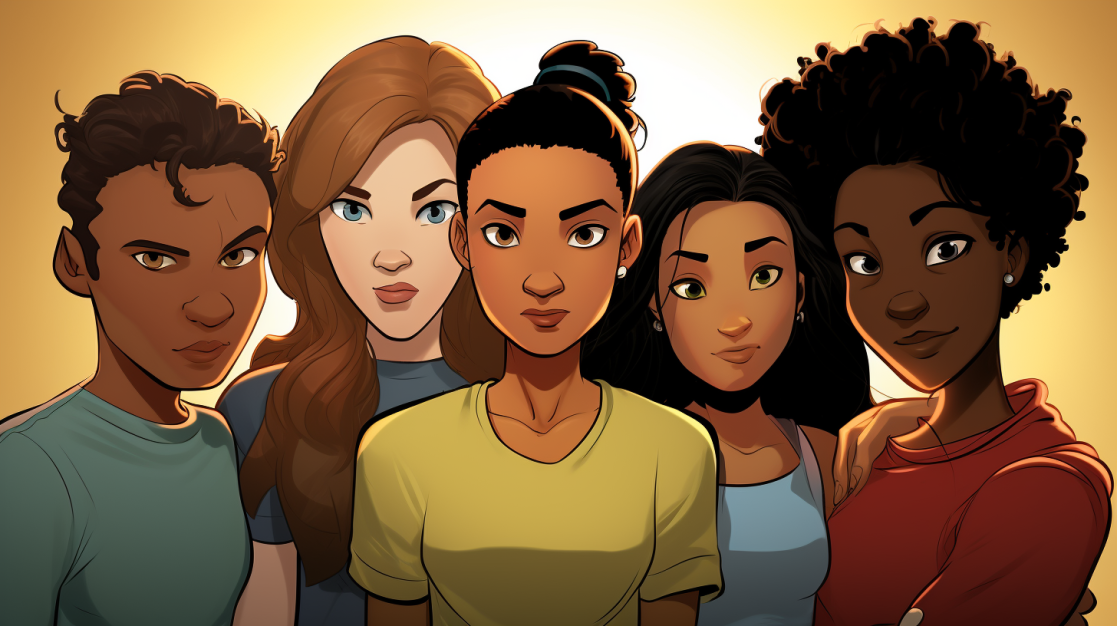A new study finds that adolescents who identify as multiracial face greater health and behavior risks compared to peers who identify with one race.
Key findings show mixed-race youth have higher rates of health issues, substance use, suicidal thoughts, sexual activity, and school discipline problems.
Researchers analyzed self-reported race data from over 80,000 7th-12th graders collected in the National Longitudinal Study of Adolescent Health.
Their analysis reveals:
- 7.4% of students identified as multiracial, selecting two or more races when asked about their race.
- Multiracial adolescents had significantly higher odds of fair/poor health, frequent tiredness, skin problems, headaches, muscle aches, sleep troubles, and depression compared to single-race peers.
- Multiracial youth were also more likely to smoke, drink alcohol, get drunk, consider suicide, have sex, skip school, repeat a grade, and get suspended.
- Higher risks held true across multiracial groups – White/Black, White/Asian, Black/Asian etc. No one mixed-race combination stood out as higher risk.
- Multiracial adolescents scored between their constituent races on IQ tests and grades, suggesting a blend of advantages. But they still showed elevated health/behavior risks.
Source: Am J Public Health
Researchers hypothesize multiracial youth may face identity struggles that lead to stress affecting their health and behavior.
But more research is needed to understand the exact sources of stress facing this group.
Multiracial Teen Identity Issues
Multiracial youth have grown rapidly with interracial marriages on the rise.
But our understanding of their health and developmental needs lags behind.
Past studies suggest mixed-race youth may face greater emotional and identity challenges navigating their multifaceted backgrounds compared to single-race peers.
Reasons include:
- Difficulty fitting in and feeling torn between racial/ethnic groups.
- Lack of family and social support in exploring mixed-race identity.
- Feeling pressure to identify with just one aspect of their racial makeup.
- Dealing with racism, stereotypes, and exclusion from peers of any racial group.
- Not having mixed-race role models and mentors to look to.
Despite facing potential identity struggles, prevailing stereotypes have painted multiracial youth as universally adjusted and free of problems.
But scant research has actually compared their risks, especially on a national scale.
Study on 80,000+ Teens: Multiracial vs. Single-Race
This new study provides much-needed data comparing multiracial adolescents to single-race peers.
Researchers surveyed over 80,000 teens in grades 7-12 nationwide in the 1994-1995 National Longitudinal Study of Adolescent Health (Add Health).
Add Health takes a comprehensive look at adolescents’ health, collecting data on:
- Demographics, including self-reported race
- Health conditions, health behaviors, drug/alcohol use
- Psychological well-being
- Family dynamics and environment
- School performance and relationships
Researchers categorized students into single-race and multiracial groups based on students’ self-reported race.
Multiracial was defined as selecting two or more races.
Analysis compared mixed-race students as one group to their single-race counterparts (White, Black, Asian, Native American).
Researchers also looked at specific combinations like Black/White and White/Asian.
Major Findings: Elevated Risks Faced by Mixed-Race Youth

The study yielded clear results – adolescents who identified as multiracial showed higher health/behavior risks across the board compared to single-race youth.
Poorer Health
Multiracial adolescents had significantly higher odds of:
- Fair or poor general health
- Frequent tiredness
- Regular headaches
- Sleep problems
- Depression
They also reported more chronic issues like skin problems, muscle aches, and pains.
Elevated risks remained after controlling for differences like age, gender, and socioeconomic status.
Higher Alcohol & Drug Use
Mixed-race adolescents were more likely to:
- Smoke cigarettes
- Drink alcohol
- Get drunk on a regular basis
Higher Risk Behaviors
Multiracial teens also showed increased odds of risky behaviors including:
- Suicidal thoughts
- Sexual activity
- School truancy and suspensions
The pattern held for nearly all multiracial groups compared to single-race teens.
The only exception was Black/Native American youth did not show consistently higher risks than their single-race counterparts.
Explanations for Elevated Risks in Multiracial Adolescents
Researchers did not find any single multiracial group that stood out as highest risk, pointing to a broader explanation.
They hypothesize identity issues may lead to greater stress affecting health and well-being in mixed-race youth.
Multiracial teens scored between their corresponding single-race groups in grades and IQ, so did not appear disadvantaged intellectually.
But they still showed markedly higher health/behavioral risks, pointing to psychosocial rather than academic struggles.
Study authors admit the direct source of stress facing multiracial youth is still unclear.
Limitations include a lack of:
- Data directly measuring identity conflict or confusion
- Consistent race reporting between school and home
- Deeper insights into family dynamics
Still, the findings make a strong case that multiracial adolescents face greater pressures affecting their health and development.
Health & Psychological Support Needed for Mixed Race Teenagers
This study provides long-overdue national data showing multiracial youth face higher risks across the board.
While more research is needed, findings should spur efforts to better support diverse youth.
Schools, healthcare providers, counselors, and community programs should recognize multiracial youth as an at-risk group with unique needs.
Top priorities include:
- Building stronger mixed-race community ties and peer support
- Promoting open dialogues around identity
- Hiring more multiracial teachers/mentors
- Embedding mixed-race voices into curriculums
- Expanding mental health/counseling services
Multiracial youth have too often fallen through the cracks, stereotyped as universally problem-free.
This study makes it clear they face profound struggles requiring greater societal understanding and support.
References
- Study: Health and behavior risks of adolescents with mixed-race identity
- Authors: J. Richard Udry et al. (2003)







